
Our minds are always trying to make sense of the world, but when it comes to optical illusion the brain ismistaken” without even realizing it.
Optical illusion is a term used to designate images that deceive human vision. Thus, one sees things that are not present, but which are transformed in the human cognitive system, creating, for example, a moving image.
see more
Astrology and genius: THESE are the 4 most brilliant signs of…
iPhones that didn't succeed: 5 launches rejected by the public!
This happens because the human visual system picks up misleading information from the image. That is, cognitive perception is “fooled” and sees something that is not really happening in that image.
It is possible to create optical illusion images, which can appear naturally or created on purpose. So, there are countless of them, find out which are the 30 best optical illusions.
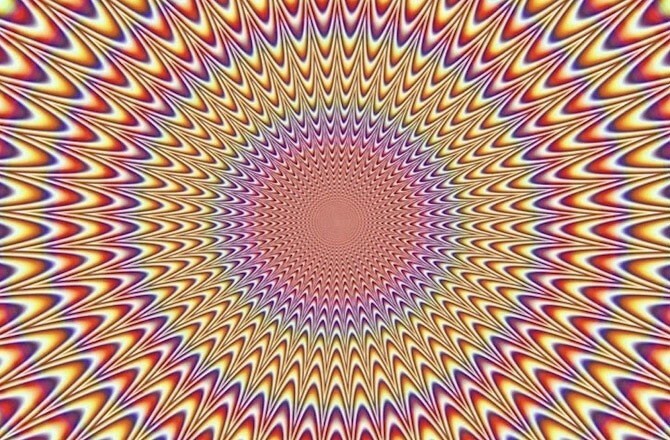
It might even look like this image is moving, but it really isn't. This illusion happens through the continuous use of shape patterns and colors, which make the brain have the impression of movement.

In this image there is also the repetition of patterns in a curved format, causing the human brain to perceive movement in circles. So when looking at the image it looks like all the circles are turning.
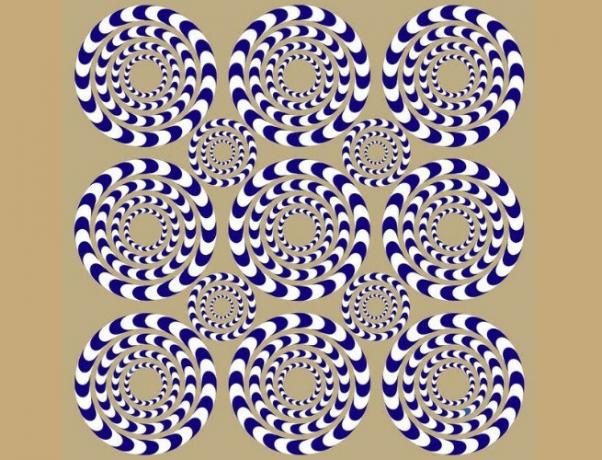
This image follows the same principle as the previous one, its shapes and repetitions produce a visual effect that tricks the brain, giving a sensation of movement.

In the case of this image, there is an illusion provided by the difference in light and shadow in the grains. Thus, this contrast causes visual perception to assimilate microscopic movements.

The blue circles have contrasting shadows, using white and black around each blue shape. The contrast favors the illusion of visual perception, which presents the impression that they are rotating.

Yellow and purple are opposite colors and, when placed next to each other, in large squares in different positions, causes the brain to create visual illusions. Thus, what is perceived is movement between squares in irregular placements.

The closed format of the figure, in a kind of tunnel, offers depth to the image, which added to the use of the contrast scheme and shadows in the orange spheres, provides the visual perception of movement in the image.

This image has 12 black dots scattered between the intersections of the gray lines. However, people cannot visualize most of them.
This happens because the dots are highlighted in black and reduced, so the part where you don't see the dots looks like the gray lines are continuous.

When the gaze is fixed on the center point of the image, the two circles begin to rotate. This happens by repeating the format and colors, along with the use of shadows on the sides of each one of them.
Thus, when the gaze is focused on the point, the shadows generate the perception of movement as they are in the peripheral vision.

This optical illusion is well known, as the color change from white to black at the intersection points of the lines is amazing. In fact, all the dots are white, but the intersections between black and white give the impression of many black and white dots.

There are several pink dots in the image and an empty space that progresses around the circle. However, if the vision is focused on the black cross for 20 seconds, it is noticed that the empty space between the balls will turn into a small green ball.
This illusion happens because the green color is the opposite of the pink color and the eyes simulate the existence of this circle.

This visual confusion is due to the lack of visual detail to establish depth in the image. Thus, the brain can understand that the ballerina can rotate both ways, due to the lack of visual details.

This image is made up of several black dots that are separated with different spacing. Depending on the spacing, the brain creates an image with this union.
With that, when closing the eyes and focusing on the image, the visual system will create a clear image, forming a face in this example.


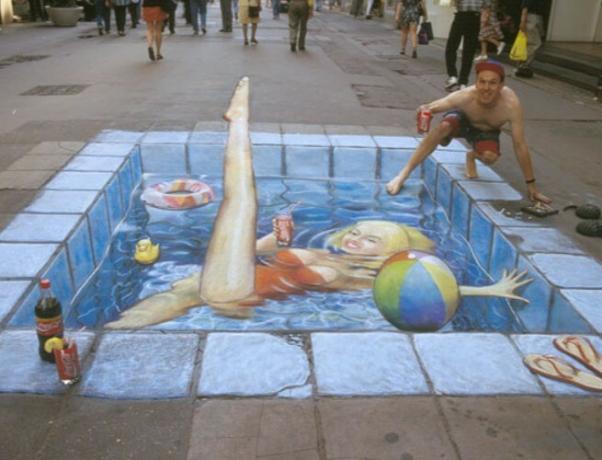

The white and black squares are alternated and, based on the contrast created between these two colors, there is a visual illusion that makes the circles merge, causing a shuffling visual.

This optical illusion is due to perspective. The orange sphere on the left appears to be smaller than the orange one on the right. However, this illusion only happens because the blue spheres around them are of different sizes.
See how they are the same size:

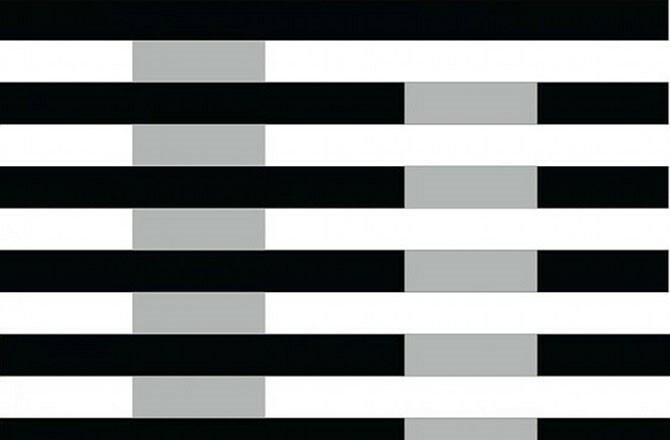
Apparently, there are two columns of different colors, one being gray and the other white. However, they are the same color, both gray.
This illusion is achieved by the dark shade of black between them and the first square of the missing gray column on the right. Thus, the visual approximation of color leads to the understanding of the white color.

Although it looks like the lines are curved, they are all straight. What makes them look crooked are the small white squares placed at the ends of the black squares, causing a different visual perception.

In this image the balls appear to be different colors, but they are all the same color. What causes confusion in the brain is the overlapping of colored lines over the balls. See if the lines are removed:


The two-color dress became very famous on the internet, because people see it in different colors. One of the most seen options is the dress in blue and black, in the other white and gold.
This visual difference happens according to the perception and interpretation of daylight. However, the real colors of the dress, discovered with the help of software, are blue and black.

The overlapping of the circles with the straight lines makes the edges of the square look crooked.
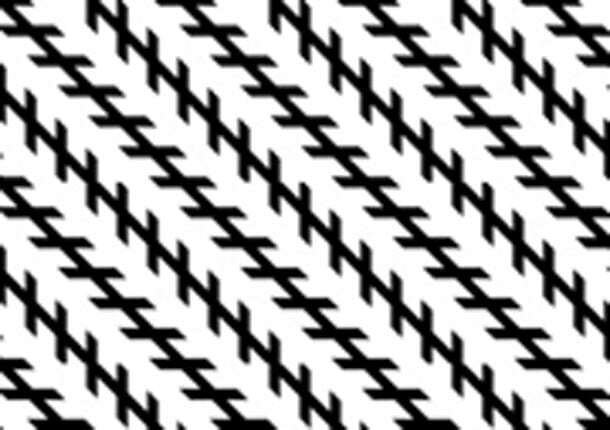
When looking around the image, it is possible to notice that the lines move, but they are static. The illusion is created by the sharp contrast between white and black, and by the opposition and variations of the smaller lines that alternate directions.

This is another very famous optical illusion. At one end an object with rectangular sides is presented and at the other end there are three cylindrical ends.

When focusing the gaze on the center of the image, moving the head closer and further away from the center, the brain interprets it as a change in the intensity of “light”.
This effect occurs because the blackest, very intense color becomes smoother and the white part becomes more present, which generates an effect of light intensification.

In this image the horizontal lines look crooked, but they are actually straight. The cause of this impression is the alternation between the white and black squares that are in different spaces.
Thus, they generate a sense of depth, which makes the line appear distant from each other.

The large black sphere undergoes a process of smoothing the black, starting to form the white color. Therefore, the aspect of depth appears in the figure, forming a kind of tunnel.

The lines then converge and meet in the center of the image. By superimposing the red lines near the convergence point, an aspect of depth is created in the figure. Thus, the brain creates an image of a hallway from depth.

The different shapes cause the shuffling of visual perception, along with the color contrasts. With this, there is the assimilation of a kind of movement between each aspect of the image.
See too:


